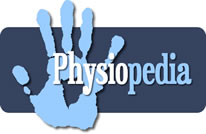Irecieved an interesting study in my in box this morning. It finds that massage after exercise not only does NOT increase blood flow and, therefore, improve lactic acid removal, it decreases both blood flow and lactic acid removal.
It is reported:
Dr. Tschakovsky said that massage may act by decreasing inflammation, or it may produce a placebo effect. “There is so much inconclusive work out there, that we really don’t understand massage in the context of exercise,” he said.Interesting study that seems to punch a hole in a long accepted belief on how to minimize pain after exercise.
Jason L. Harris
References
1. Wiltshire V, Poitras V, Pak M, et al. Massage impairs rather than enhances lactic acid removal from muscle after strenuous exercise. Presented at: annual American College of Sports Medicine conference; May 27-30, 2009; Seattle, Wash. Presentation Number: 09-SA-4065-ACSM.





